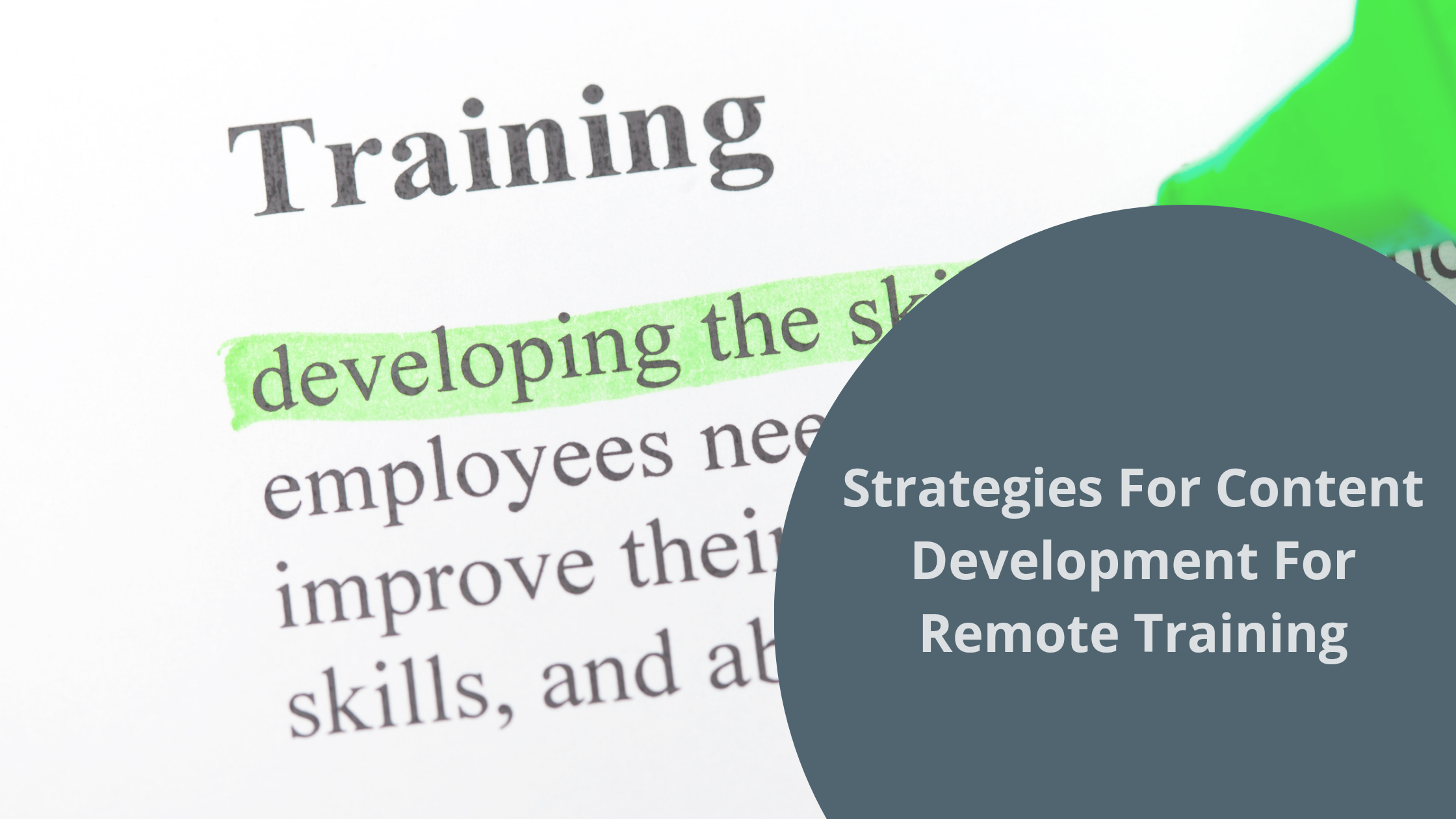Organizations today are facing new realities. Employees can work from anywhere worldwide as long as they deliver outputs on time. Rapid technological advancement enables them to adopt remote and hybrid working models, especially after the outbreak of the coronavirus pandemic.
While organizations have adequate professional development programs for their onsite employees, training the remote staff is still challenging and evolving continuously.
Why Should You Consider Remote Training In Your Content Development Strategy?
Remote working might provide the employees with a respite from dressing up, commuting to the office daily, and leading a monotonous lifestyle, but it also has its limitations. Since remote employees are virtually undertaking most tasks (including professional development training), there need to be one-to-one conversations with colleagues or trainers. Today, many employees have engaged in online learning and have come to realize the importance of experiential learning.
However, some online sessions do not deliver the quality or value that learners seek. Importance of experiential learning is to ensure that employees are able to gain practical skills and knowledge that can be applied in their work. By providing high-quality experiential learning opportunities, organizations can help their employees grow and develop professionally, ultimately leading to greater success for the company as a whole.
Organizations must have a core set of training content development strategies to optimize the benefits of remote training.
Here are the seven strategies that organizations can adopt for remote trtraining.
1. Selecting Delivery Modality
There are various options for delivery modalities, as described below.
- Virtual synchronous training is where the learners and instructors meet virtually on a digital platform at a pre-decided schedule. The learners and instructors can attend this training from any location.
- Virtual asynchronous is e-learning that is available to learners at all times. Virtual asynchronous delivery modality enables the learners to complete the training at their own pace.
- Blended learning is a training program that combines synchronous and asynchronous courses and is the most popular delivery modality among all three. It ensures a balance between providing flexibility to the learners and enabling them to step out of their silos and interact with their peers and colleagues.
2. Training Needs Analysis
Options for imparting remote training are endless. Therefore, organizations must conduct a diligent training needs analysis to identify appropriate solutions and save time, money, and resources. Key questions that the training management team may consider include:
- What challenges are the remote staff facing?
- What are the primary learning needs of remote staff?
- What are the skills and technical aptitudes that they already possess?
- What would be the best tactics and strategies to ensure adequate training delivery?
- What are the profiles of remote staff?
3. Virtual Delivery Platforms
With the rise in demand for virtual learning, the variety of digital platforms available for training delivery is also increasing. Each one offers varying designs, components, and features. Organizations may choose one based on training needs, vision, and goals.
Consider the following recommendations when choosing a virtual delivery platform for your organization:
- It must be easy to use and navigate for instructors and learners
- It must be compatible with different devices
- It must provide interaction channels
- It must be able to integrate videos, audio, and other media
- It must be within the budget of the organization
4. Follow Up
The goal of training the employees is to impart new knowledge and help them develop new skills. The training modules will give the necessary information to the learners. It is crucial to have follow-up assignments and provide the learners with opportunities to apply the newly gained knowledge in a safe environment to witness a change in the learner’s behavior.
Unless the learners practice what they learn during the training, it may eventually be ineffective. Learning is a journey, and the training content development strategy must include reinforcement, application., and feedback to be most beneficial to the learners and organizations.
5. Using Simulations
Technology allows training managers to go above and beyond to help the learners benefit from their learning programs. Organizations can invest in creating stimulating learning environments that enable learners to practice and apply new skills to solve real-life problems safely without worrying about the consequences. Besides simulations, making a training video can enhance remote training experiences by providing visual demonstrations, explanations, and engaging content for learners. Incorporating step-by-step instructions, real-life scenarios, and interactive elements ensures effectiveness.
The more the employees practice, the more they become confident in solving problems while on the job. To achieve engaging learning simulations, consider the following recommendations.
- Develop interactive and captivating simulations using open-source tools
- Use voiceovers to provide instructions, hints, motivational phrases, and feedback
- Introduce navigation elements in your learning management system
- Keep granular modules and use templates for efficient maintenance
- Use Augmented Reality or Virtual Reality technologies in your training content
Training programs’ Simulations increase the employees’ participation and engagement, making them excited and motivated to keep learning.
6. Invest In Outsourcing
Developing content for remote training is a complicated process involving multiple iterations, extensive administration engagement, and continuous support to the team responsible for developing and implementing the training.
The administration must clearly explain the training vision to help the developers understand training goals and expected outcomes. A variety of dedicated companies help organizations develop end-to-end training solutions, including delivery and scaling to a broader network.
Organizations may invest in outsourcing and agile development to expedite employee training transformation. Outsourcing will help bring experienced professionals on board and, thus, enable you to utilize the time in strategizing other areas for your organization’s growth.
7. Keep It Simple
Developing a strategy involves several steps, tasks, and activities. It is complex and requires meticulous planning. To achieve training content that is effective, engaging, and produces the desired outcomes, make sure that you don’t over-engineer your strategy.
A clearly defined vision, goals, and objectives for the training program will lead you to a straightforward step-by-step process for developing a simple strategy.
Creating a marketing strategy that makes the learners aware of the new training program and creates excitement is also essential.
Run a pilot or a demonstration to test the effectiveness of the training content and seek feedback from the learners. Incorporate the feedback into the training program before its official launch.
Conclusion
The Coronavirus pandemic has opened multiple avenues for organizations to explore and adopt. The future working environment needs flexible and agile training strategies resilient to unpredictable changes. Professionals require new skills and knowledge to stay up to speed with the upcoming trends in the corporate world. Follow the techniques mentioned above to ensure the development of compelling content for remote employee training.








